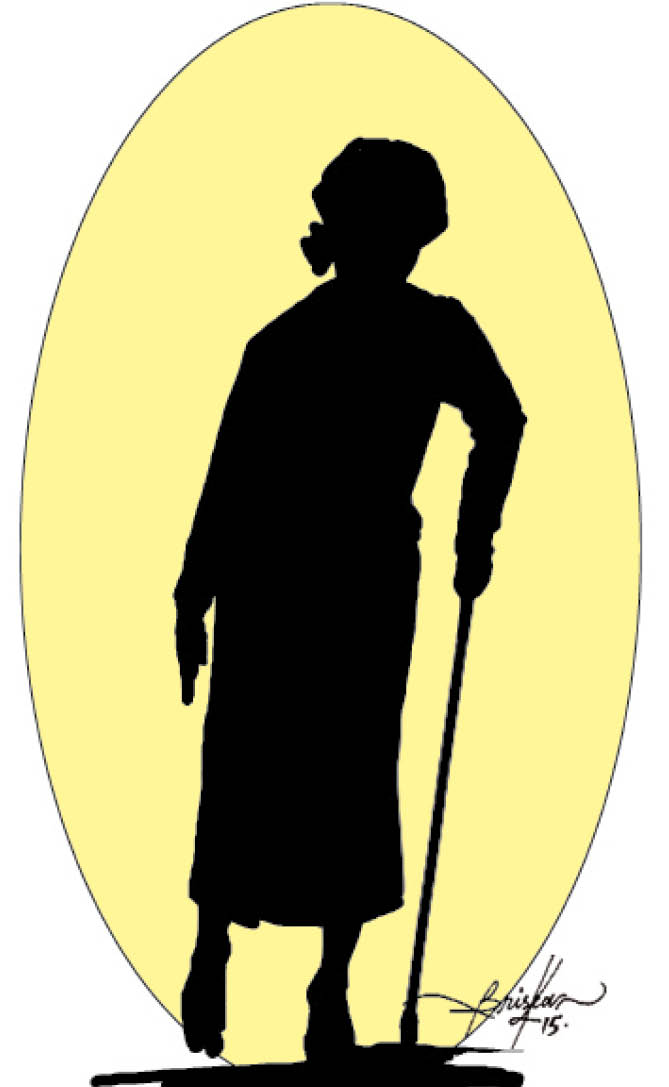John, 65, stumbled on an object, fell and later found it difficult to walk.
He was taken to hospital and diagnosed with a fracture. He had to be admitted for months and even after the treatment, he still found it difficult to walk properly.
- PTDF trains 9,659 Nigerians on overseas, local scholarships
- The roadmap to understanding ‘interfaith’ in Nigeria
The World Health Organization (WHO) says fractures result from mechanical forces for example a fall from standing height or less.
A clinical physiotherapist with the Central Hospital Benin, Thomas Akingbade, described fracture as a complete or partial break in a bone.
He said fracture could occur in individuals of all ages, but the elderly who are 65 years and above, are more likely to suffer from it, following a fall, compared to the younger ones.
“The elderly can be described as fragile, because their muscles and bones are not as strong as that of younger persons, hence, fractures in the elderly, are termed fragility fractures,” he said.
He said the fracture frequently seen in the elderly, following a fall, include hip, wrist or spine fractures.
He said, “A fracture can be a devastating blow to an elderly’s health and independence, decreasing functional status and quality of life permanently”.
According to him, while some may recover their independence, half of the elderly who suffer will require home healthcare in the few months following a fracture, and many will have long-term decline in functional abilities.
“Fractures decrease long-term quality of life just as much as chronic diseases such as diabetes or chronic lung disease. Acutely, the pain and shock of a fracture injury, may precipitate depressive mood, complicating diagnosis and treatment, increasing the need for further medication and prolonged hospital admission,” Akingbade added.
Risk factors of fracture
He explained that due to the changes in normal body functions as people grow older, and other factors, the elderly are at higher risk for fractures.
“The risk factors that can predispose an elderly to fall and subsequently to fracture, include: visual impairment, such as from short-sightedness or cataracts; disorders of the nervous system, such as low back pain, that causes the legs to intermittently and suddenly become weak; and joint and muscle problems, such as occur with arthritis.
Others are difficulties in gait and balance, such as in Parkinson’s disease; medications that induce sleepiness; slippery surfaces and uneven flooring; poor lighting; tripping obstacles such as loose rugs and pets; unstable furniture; and objects left lying on the floor or steps.”
Also, osteoporosis, a condition in which the bone becomes brittle and fragile due to hormonal changes, may predispose the elderly to fracture, especially in elderly women.
Symptoms
He said the symptoms include moderate or severe pain; difficulty using the limb; noticeable and unusual bump, bend or twist and swelling.
According to him, in diagnosing fracture, an X-ray or MRI must be done, depending on the particular bone suspected to have been fractured.
After suspecting fracture, he said the first is to protect the affected bone from further injury and this can be done by gently assisting the elderly to lie on a bed or flat surface while the affected bone should not be moved, but gently rested.
“In the event that ice pack isn’t readily available, ice blocks can be crutched and packed in a wet towel, which can then be placed on the painful and swollen body part.
“The broken bone can be held in place, using bandage. All these can be done while making arrangement for medical care,” he said.
Treatment
He said the medical care will involve the doctor asking about the circumstances that led to the suspected fracture, followed by physical examination, adding that
if sufficient findings suggest fracture, X-ray or MRI will be done to fully assess the fracture.
“Bone healing is a natural process that in most cases will occur naturally. Therefore, treatment typically focuses on providing the broken bone with the best environment for healing and ensuring the restoration of optimal function.
“For the natural healing process to result in good healing outcome, the orthopaedic surgeon will reduce the fracture, by aligning the broken bones, and to ensure the aligned broken bone stays in place, casts or braces; metal plates and screws; intramedullary nails, or rods, placed in bone cavities; external fixings, can be used to immobilize the aligned broken bones”.
He explained that fractures can take several weeks to several months to heal, depending on their severity, adding that the duration is dependent on the bone fractured.
“After the bone has healed, it may be necessary to restore muscle strength and mobility to the affected area through physiotherapy management”.
He added that “If the fracture occurs near or through a joint, there is a risk of permanent stiffness or arthritis. If this happens, a person may not be able to bend that joint well as before the injury”.
How to minimize the risk of fall
The expert said since it is the weakness of the muscles and bones of the elderly that makes them susceptible to falls and fractures, physical activity, in the form of mild to moderate exercises, targeted at improving strength, flexibility and agility, will help reduce the incidence of fall.
He advised on “balanced diet that is rich in calcium; limiting sleep-inducing medications or when on such medication, it should be used under close monitoring; appropriate treatment of underlying medical conditions like low back pain that cause leg weakness; environmental modifications such as installing grab bars, removing tripping obstacles, and maintaining sufficient lighting.”

 Join Daily Trust WhatsApp Community For Quick Access To News and Happenings Around You.
Join Daily Trust WhatsApp Community For Quick Access To News and Happenings Around You.


